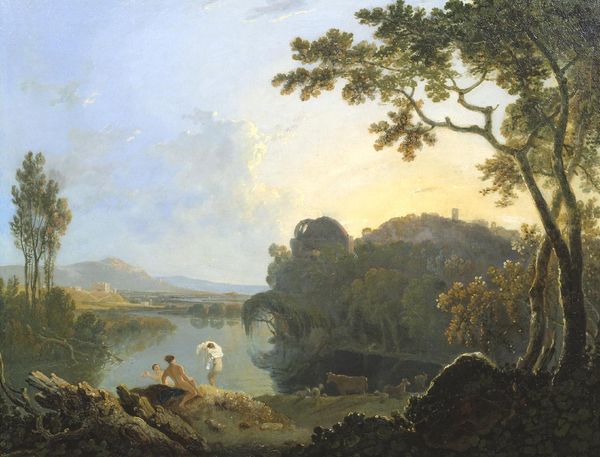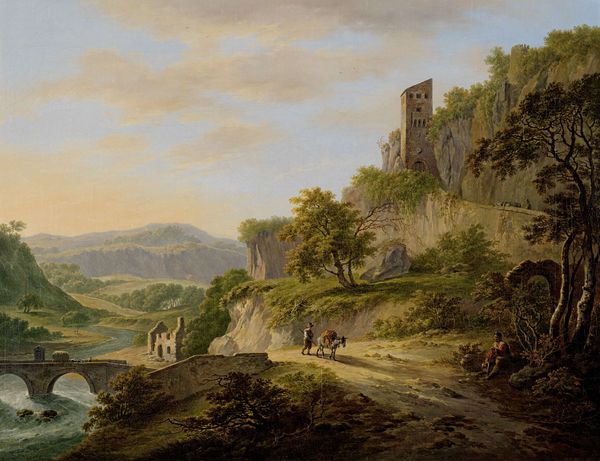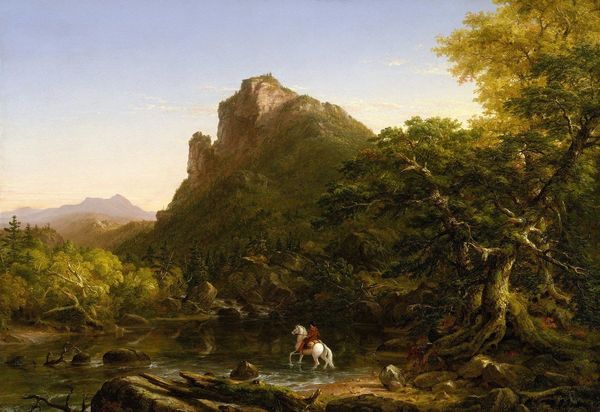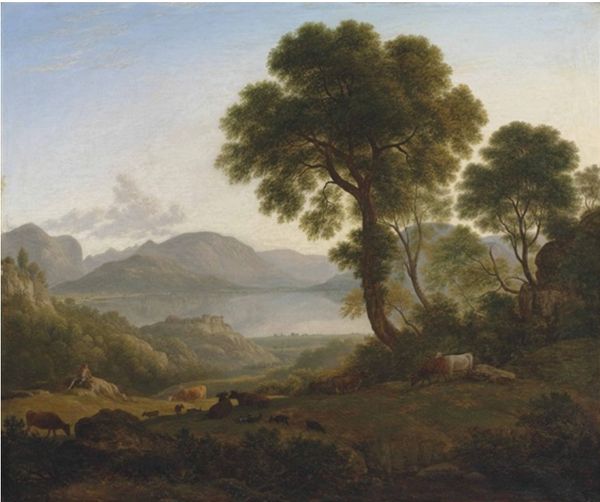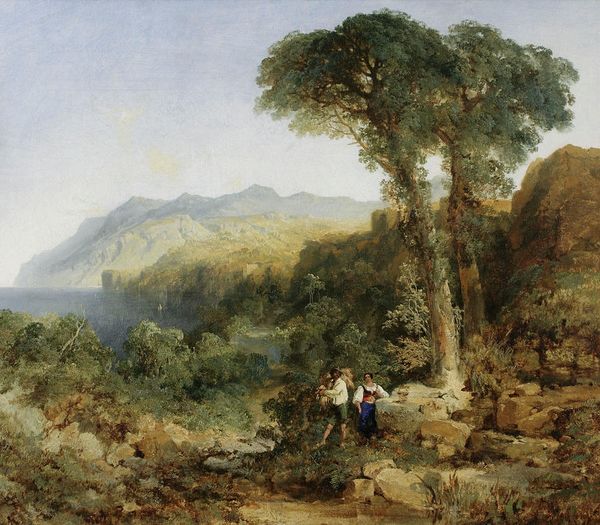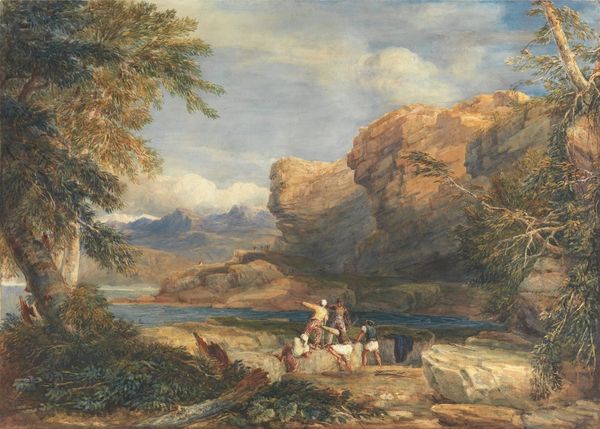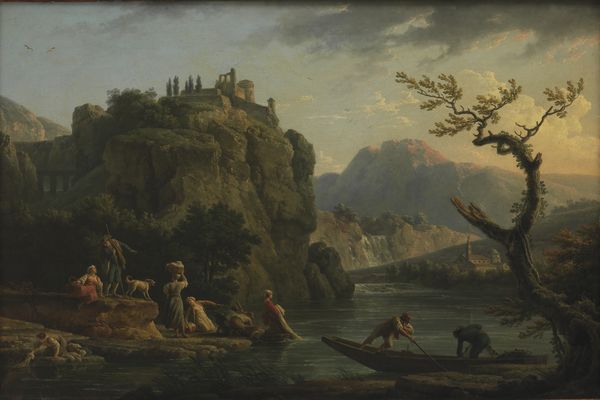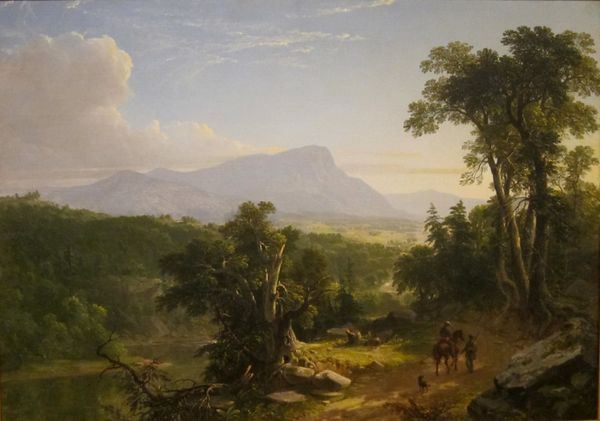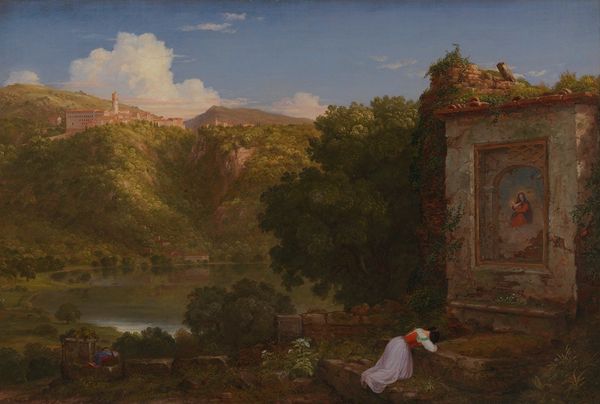
painting, oil-paint
#
painting
#
oil-paint
#
landscape
#
classical-realism
#
oil painting
#
romanticism
#
history-painting
#
academic-art
Copyright: Public Domain: Artvee
Editor: This is Turner's "Lake Avernus: Aeneas and the Cumaean Sybil," painted between 1814 and 1815. It's quite striking how the misty blues and greens almost obscure the figures. What strikes you most about this piece? Curator: For me, it's the materiality itself – the layers of oil paint that build up this scene. Look at how Turner manipulates the medium to create atmosphere. Notice how the layering isn't just descriptive. The built up impasto and visible brushstrokes become active agents, shaping our understanding of labor, nature, and even class. Editor: Class? How so? Curator: Consider the economic reality of Turner's practice. The pigment he used, the canvases he commissioned, even the studio space he inhabited—these all speak to the patronage system and the social standing of artists at the time. He's not just depicting a landscape; he's engaging in a form of material production tied to a specific social hierarchy. The quality of materials are a result of wealth, even power. Editor: That's fascinating. So the painting itself is a product of its time, beyond just its subject matter? Curator: Precisely. The "Romantic" awe we feel viewing it isn't just from the sublime landscape, but from a recognition of the complex web of resources, labor, and consumption that made its creation possible. Look at the figures, almost secondary, overshadowed by the grand theatre set of trees, ruins and sky, each rendered possible by paint produced and acquired with no small effort. Editor: I never considered the actual paint itself having so much to say! Curator: It's easy to get lost in the image, but art *is* material. Reflecting on how those materials came together encourages a deeper appreciation for the processes involved. Editor: I’ll definitely look at paintings differently now, thinking about the means of their making and what it signifies. Thank you!
Comments
No comments
Be the first to comment and join the conversation on the ultimate creative platform.

